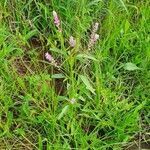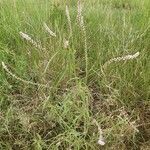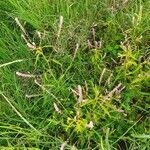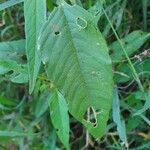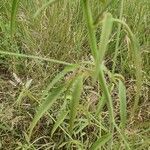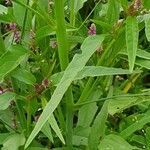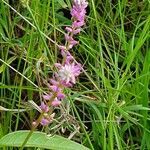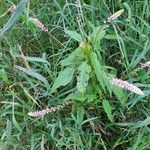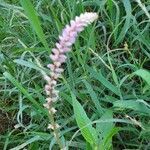Annual, often branched from base; small specimens erect; larger ones prostrate-ascending or with widely patent, prostrate-ascending, often long branches, 0.15-1.6 m long; stem often flexuous, glabrous or slightly pubescent. Leaves ovate or ovate-oblong from a cuneate, obtuse, rounded or subcordate base, with an acute, obtuse or rounded apex, entire or obsoletely crenulate, herbaceous, glabrous, 1½-7½ by ¾-5½ cm; petiole ¾-5 cm. Racemes solitary, widely patent-ascending, in upper part dense, lower down rather lax, 1-30 cm long (1¼-7½ cm of peduncle included), glabrous or subglabrous; lowest fruits often falling off before expansion of the highest flowers; bracts widely patent, ovate-lanceolate, concave with a strong midrib and broad scarious margins, glabrous (as are pedicels, bracteoles, scales and perianth), 2½-3 mm long, persistent; pedicels very short; bracteoles appressed against sterile flowers or in the absence of these against the perianth, oblong with scarious margins, 2-2½ mm long. Sterile flowers appressed against the fertile flower, flat, much dilated from a stalk-like base, palmatifid, towards the apex of the raceme gradually smaller, in the highest flowers absent. Tepals during anthesis more or less patent, afterwards erect; 2 outer ones 3½-4¼ mm long, concave, 5-7-nerved, green with whitish or pink borders; 3 inner ones shorter, much narrower, thinner, obtuse, pink, 1-2-nerved. Adult filaments much longer than anthers. Style (short stigmas excluded) 2-2.5 mm; perianth after anthesis not or hardly accrescent. Fruit compressed-globose, between the apical hornlets slightly depressed, bearing a persistent style-base, 2-2!/4 mm diam.
An annual herb. It grows 20-50 cm high. The leaf blade is narrowly oval. It lies over. It is branched from the base. The leaves are alternate. It is 2-6 cm long by 6-30 mm wide. The flowers are white or pink. They are small and long slender flower stalks. The fruit have one seed.
